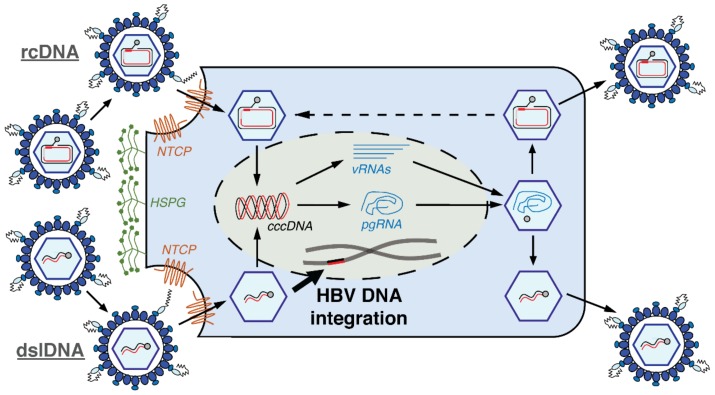Figure 1.
Replication cycle of Hepatitis B Virus (HBV) and its integration into the host genome. The nucleocapsid containing the relaxed circular DNA (rcDNA) (top half) or double-stranded linear DNA (dslDNA) (bottom half) HBV genome enters the cytoplasm via the sodium taurocholate co-transporting polypeptide (NTCP). In the nucleus, both forms can be converted into covalently closed circular DNA (cccDNA) which serves as the transcriptional template for all viral RNAs (vRNAs), including pre-genomic (pg)RNA. The pgRNA serves as the template for reverse transcription, which occurs within the nucleocapsid and results in rcDNA or dslDNA. The nucleocapsids can be then enveloped and secreted as virions. The intra-nuclear dslDNA HBV can integrate into the host cell genome at the site of double-stranded DNA breaks by non-homologous end joining (NHEJ). We have recently found that the reimport of dslDNA-containing nucleocapsids does not play a major role and that input HBV DNA is the main contributor of HBV DNA integration in in vitro models [16]. Figure adapted from [24].

